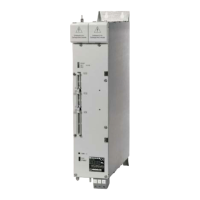6.4.1 RS-232-C standard data interface via “EXT’‘-mode
If the TNC 151/TNC 155 is to operate as an RS-232-C standard data interface, the following parameters
may be programmed with “0”:
218
219
220
221
224
Function
Parameter
No.
Data format and transmission
stop for RS-232-C/V.24 data
interface
222
0
bit
0 = 0 7 data bits (ASCI l-code with 8th bit = parity)
0 = I* 8 data bits (ASCI l-code with 8th bit = 0,
9th bit = parity)
1 = 0 no BCC check
1 = 1 BCC no control character
2 = 1 Transmission stop through RTS
3 = 1 Transmission stop through DC3
4 = 0 Character parity even
4 = 1 Character parity odd
5 = 1 Character parity required
7,6
= 00 1 l/2 stop bits
=Ol 2 stop bits
=lO 1 stop bit
=I1 1 stop bit
*Please note:
With hardcopy printout of a graphics image, the TNC automatically switches to 8 data bits.
Transfer blockwise (as of software level 05)
With blockwise transfer from an external computer to the TNC, data flow is no longer controlled via RTS
or DC3, but only via the control characters ACK and NAK.
Control via DSR, DTR
If the control switches the RTS-output to 0 V, the output DTR is simultaneously switched to 0 V (connected
to the DSR-input of the peripheral unit). If the DSR-input of the peripheral unit is not allowed to be switched
to 0 V during data transmission, a logical “1” should be connected to DSR via a bridge connection.
Example for the determination of the entry value
Data format:
7 data bits (ASCI l-code with 8th bit = parity)
Transmission stop through DC3
Character parity even
Character parity required
1 stop bit
bit 0 - Y7 7 6 5 4 3 2 1 0
Value 128 64 32 16 8 4 2 1
Insert 0 or 1 as appropriate 1 0 1 0 1 0 0 0
Determilned entry value for
parameter 222:
168
59

